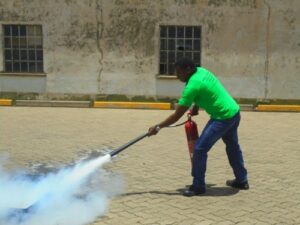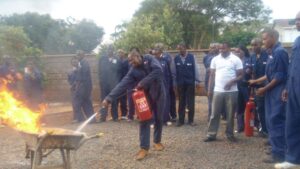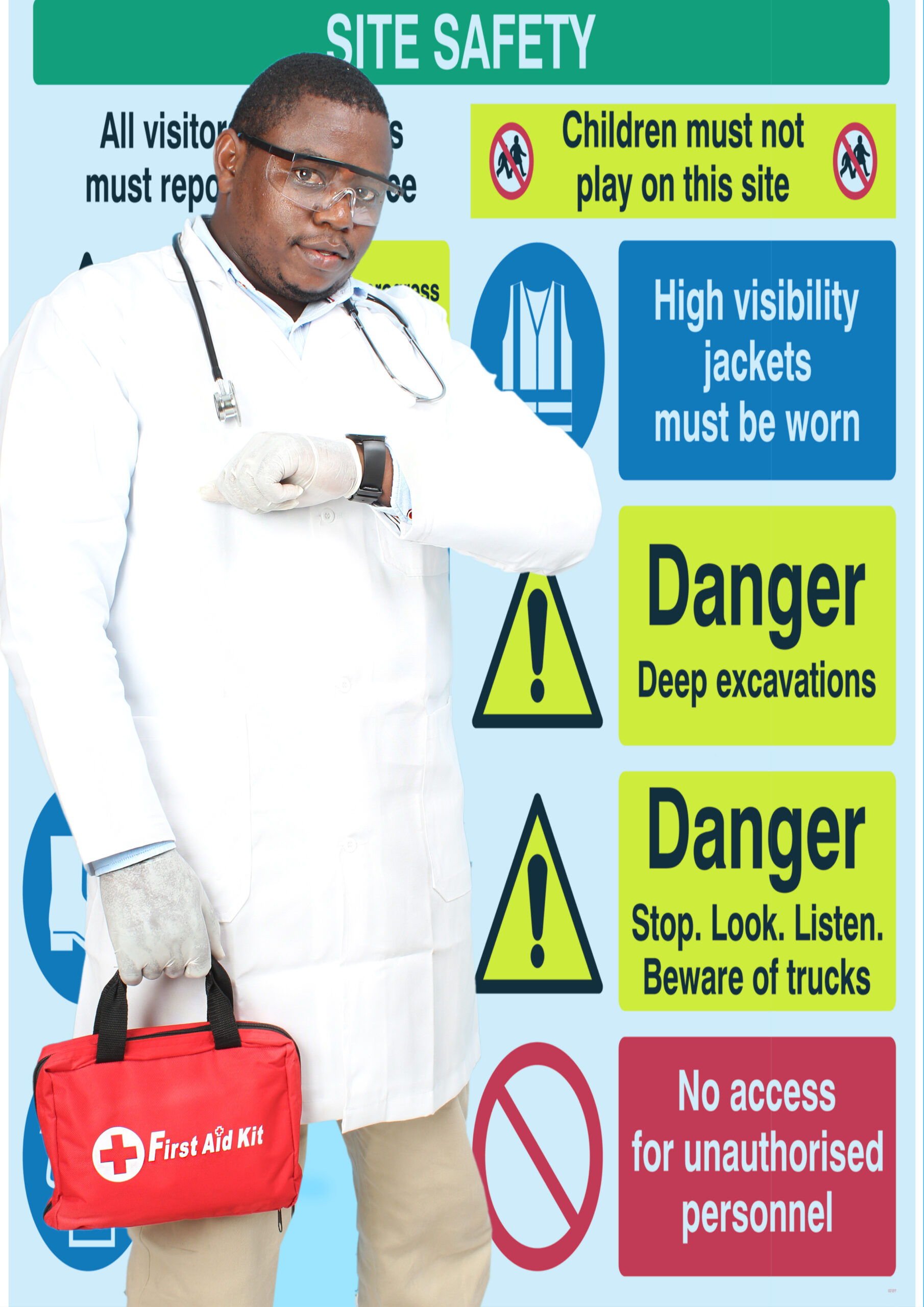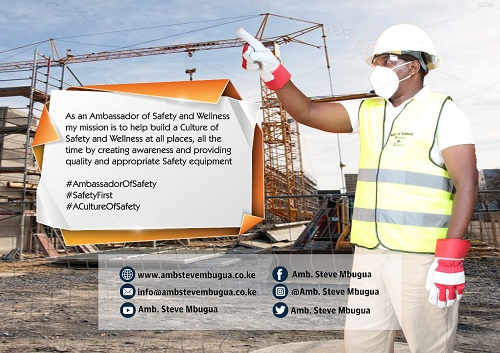Building a Culture of Safety: A Comprehensive Guide to Fire Safety
As Ambassador Steve Mbugua, my mission over the past decade has been dedicated to fostering a culture of safety worldwide. I am deeply passionate about equipping individuals with the necessary knowledge, skills, and resources to prevent, prepare for, and respond effectively to various safety hazards. One of my key areas of interest lies in fire safety, recognizing its critical importance in safeguarding lives and property. In this comprehensive guide, we will delve into the intricacies of fire safety, exploring its causes, effects, prevention strategies, latest trends, notable incidents, statistics, and actionable steps to promote safety awareness.
Introduction to Fire Safety:
Fire safety encompasses a range of practices aimed at minimizing the risk of fires, as well as mitigating their impact when they occur. It involves preventive measures, preparedness planning, and prompt, effective responses to fire emergencies. By understanding the causes, effects, and prevention methods associated with fires, individuals and communities can significantly reduce their vulnerability to this pervasive hazard.
Causes of Fire:
1. Electrical Malfunctions: Faulty wiring, overloaded circuits, or damaged electrical appliances can spark fires.
2. Cooking Accidents: Unattended stoves, grease buildup, and flammable materials in the kitchen can lead to fires.
3. Smoking: Improper disposal of cigarettes or lit tobacco products can ignite combustible materials.
4. Heating Systems: Malfunctioning furnaces, space heaters, or chimneys pose fire risks, especially in colder climates.
5. Arson: Deliberate acts of arson, whether for vandalism or malicious intent, can result in devastating fires.
6. Flammable Liquids: Improper storage or handling of gasoline, solvents, or other flammable liquids can lead to explosions and fires.
7. Combustible Materials: Accumulation of combustible materials such as paper, fabrics, or cardboard increases the risk of fire.
8. Natural Disasters: Wildfires, lightning strikes, or volcanic eruptions can trigger fires with widespread consequences.
9. Chemical Reactions: Mishandling of hazardous chemicals or improper mixing can cause chemical fires.
10. Equipment Failure: Malfunctioning machinery, appliances, or industrial equipment can generate sparks or overheating, igniting fires.
Effects of Fire:
1. Loss of Life: Fires can result in fatalities, causing tragic loss of life and devastating communities.
2. Property Damage: Structures, belongings, and valuable assets can be destroyed or severely damaged by fires.
3. Environmental Impact: Fires contribute to air pollution, deforestation, and habitat destruction, affecting ecosystems and biodiversity.
4. Economic Losses: Businesses, industries, and individuals incur significant financial losses due to fire-related damages and disruptions.
5. Health Impacts: Smoke inhalation, burns, and other fire-related injuries can have long-lasting health consequences for survivors.
6. Displacement: Fire emergencies may necessitate evacuation and temporary displacement of individuals from their homes or communities.
7. Emotional Trauma: Survivors of fires often experience psychological distress, trauma, and grief following the incident.
8. Infrastructure Damage: Fire can compromise infrastructure such as roads, bridges, and utilities, hampering recovery efforts.
9. Interruption of Services: Fires may disrupt essential services such as electricity, water supply, and transportation networks.
10. Social Disruption: Fires can disrupt social cohesion, community dynamics, and livelihoods, leading to social unrest and instability.
Preventing Fire Incidents:
1. Install Smoke Alarms: Ensure the presence of working smoke alarms on every level of your home and near sleeping areas.
2. Practice Fire Safety in the Kitchen: Stay vigilant while cooking, keep flammable materials away from heat sources, and have a fire extinguisher within reach.
3. Electrical Safety: Regularly inspect electrical systems, avoid overloading outlets, and promptly address any signs of electrical issues.
4. Smoking Safety: Designate smoking areas away from flammable materials and use proper ashtrays for extinguishing cigarettes.
5. Heating Equipment Maintenance: Schedule regular maintenance for heating systems, chimneys, and space heaters to prevent malfunctions.
6. Proper Storage: Store flammable liquids, chemicals, and combustible materials in designated areas away from ignition sources.
7. Fire Safety Education: Educate household members, employees, and community members on fire prevention measures, evacuation procedures, and fire safety protocols.
8. Escape Planning: Develop and practice fire escape plans with clear evacuation routes and designated meeting points.
9. Fire-Resistant Building Materials: Use fire-resistant materials in construction and retrofitting to enhance building safety.
10. Fire Suppression Systems: Install fire sprinklers, fire extinguishers, and other suppression systems in residential, commercial, and industrial settings.
Latest Trends in Fire Safety:
1. Smart Fire Detection Systems: Integration of IoT (Internet of Things) technology for real-time monitoring and early detection of fires.
2. Fire-Resistant Building Designs: Advancements in building materials and design techniques to enhance fire resistance and containment.
3. Data-Driven Fire Risk Assessment: Utilization of data analytics and predictive modeling for identifying and mitigating fire risks.
4. Remote Monitoring and Response: Adoption of remote monitoring systems and automated response mechanisms for swift intervention in fire emergencies.
5. Fire Safety Training Technologies: Interactive simulations, virtual reality (VR), and augmented reality (AR) tools for immersive fire safety training experiences.
Examples of Serious Fire Incidents:
1. The Great Fire of London (1666): A catastrophic fire engulfed much of London, destroying thousands of homes and landmark buildings.
2. Triangle Shirtwaist Factory Fire (1911): A fire in a New York City garment factory claimed the lives of 146 workers, highlighting the need for workplace safety reforms.
3. Chernobyl Nuclear Disaster (1986): A reactor explosion at the Chernobyl nuclear power plant led to a massive fire and radioactive contamination, resulting in long-term environmental and health impacts.
4. Grenfell Tower Fire (2017): A high-rise residential building fire in London resulted in 72 fatalities and exposed issues related to building safety regulations and cladding materials.
5. Camp Fire (2018): The deadliest and most destructive wildfire in California history, the Camp Fire claimed 85 lives and destroyed thousands of homes and structures.
Global Fire Incidents Statistics:
• According to the National Fire Protection Association (NFPA), U.S. fire departments respond to an estimated average of 1.3 million fires each year.
• In 2019, fires caused approximately 3,700 civilian deaths and 16,600 civilian injuries in the United States alone.
• Globally, the World Health Organization (WHO) estimates that fires result in over 300,000 deaths annually, with the majority occurring in low- and middle-income countries.
• Property damage from fires amounts to billions of dollars annually, with significant economic and social implications for affected communities.
Fire Incidents Statistics and Examples in Kenya and Africa:
Statistics:
• According to the Kenya National Fire Brigade Association, there are approximately 12,000 fire incidents reported annually in Kenya.
• Nairobi, the capital city of Kenya, experiences a high number of fire incidents, with residential areas and informal settlements being particularly vulnerable.
• Across Africa, fire incidents pose significant challenges, especially in densely populated urban areas and informal settlements lacking proper infrastructure and firefighting resources.
• Limited access to firefighting equipment, inadequate fire safety education, and socio-economic factors contribute to the prevalence of fire incidents in many African countries.
Examples:
1. Gikomba Market Fire (Kenya): In June 2020, a devastating fire broke out at Gikomba Market, one of the largest open-air markets in Nairobi. The fire destroyed thousands of businesses and stalls, resulting in substantial economic losses for traders and vendors.
2. Kijiji Cha Chumani Fire (Tanzania): In 2019, a fire engulfed Kijiji Cha Chumani, a slum settlement in Dar es Salaam, Tanzania. The blaze razed hundreds of makeshift homes, displacing families and highlighting the vulnerability of informal settlements to fire hazards.
3. Oshodi Market Fire (Nigeria): Oshodi Market, a bustling commercial hub in Lagos, Nigeria, has witnessed multiple fire incidents over the years. In 2018, a fire outbreak destroyed numerous shops and goods, underscoring the urgent need for improved fire safety measures in crowded marketplaces.
4. Informal Settlement Fires (South Africa): Informal settlements in South Africa, such as Khayelitsha in Cape Town, frequently experience devastating fires due to overcrowded living conditions and the use of flammable building materials. These fires often result in loss of life, displacement, and socio-economic hardships for affected communities.
5. Kasubi Market Fire (Uganda): Kasubi Market in Kampala, Uganda, suffered a massive fire in 2017, destroying stalls, merchandise, and livelihoods. The incident highlighted the lack of adequate fire prevention infrastructure and emergency response capabilities in many African urban centers.
Addressing the Challenge: To mitigate the impact of fire incidents in Kenya, Africa, and beyond, concerted efforts are needed to enhance fire prevention, preparedness, and response measures. This includes investing in firefighting equipment, improving urban planning and infrastructure, promoting fire safety education, and strengthening emergency response capabilities at the local, national, and regional levels. Additionally, partnerships between government agencies, civil society organizations, and the private sector are essential to building resilient communities and reducing the risk of fire disasters.
Quotes and Acronyms:
• “Fire safety is everyone’s responsibility.” – Unknown
• “Prevention is the best form of fire protection.” – Amb. Steve Mbugua
• “Stop, Drop, and Roll: The ABCs of fire safety.”
• “FIRE: Fight, Inform, Rescue, Evacuate.”
Fire Safety is a paramount concern that requires proactive measures and collective efforts to mitigate risks and promote resilience. By raising awareness, implementing preventive strategies, and embracing innovative solutions, we can build a culture of safety that safeguards lives, protects property, and preserves
Fire Safety: Prevention, Preparedness, and Effective Response:
Fire safety encompasses three fundamental pillars: prevention, preparedness, and effective response. Prevention involves implementing proactive measures to reduce the likelihood of fires, including proper maintenance of electrical systems, safe handling of flammable materials, and adherence to fire safety protocols. Preparedness entails developing and practicing fire escape plans, conducting drills, and ensuring the availability of essential firefighting equipment. Effective response involves swift action in the event of a fire emergency, including alerting authorities, evacuating safely, and utilizing suppression measures to contain and extinguish the fire.
Call to Action:
Join Ambassador Steve Mbugua in his mission to build a culture of safety by prioritizing fire safety in your homes, workplaces, and communities. By raising awareness, implementing preventive measures, and fostering collaboration, we can mitigate the risk of fires and minimize their impact on lives and property. Let us unite in our commitment to safety and resilience, working together to create a safer world for future generations.
For inquiries, partnerships, or safety consultations, please contact Ambassador Steve Mbugua:
• Phone: +254724036078
• Email: info@ambstevembugua.co.ke
• Social Media: @AmbSteveMbugua
• Website: www.ambstevembugua.co.ke
Let’s make safety a priority and build a future where everyone can thrive in a secure environment.
Conclusion:
In conclusion, fire safety is not just a responsibility; it is a shared commitment to protecting lives and preserving communities. Through proactive prevention, meticulous preparedness, and effective response strategies, we can mitigate the risks posed by fires and create safer environments for all. Ambassador Steve Mbugua’s advocacy underscores the importance of collective action in building a culture of safety worldwide. Let us heed the call to action, embrace safety as a priority, and work together towards a safer, more resilient future.
READ MORE
Building A Culture Of Safety
Fire Fighters Pledge
Factors Affecting Devolution of Disaster Management in Kenya
World Day For Safety and Health at Work 2019
Ambassador Of Safety
Culture of Safety in Schools, Churches, House Holds and Workplaces
Fire Safety Training Institution
Africa’s Largest Supplier of Fire Safety Equipment
Conducting an Effective Fire Drill
Selecting Appropriate Fire Extinguishers
Fire Awareness in our learning Institutions
Video on How To Effectively Use a Fire Extinguisher
Fire Safety Video
Classes Of Fire






















